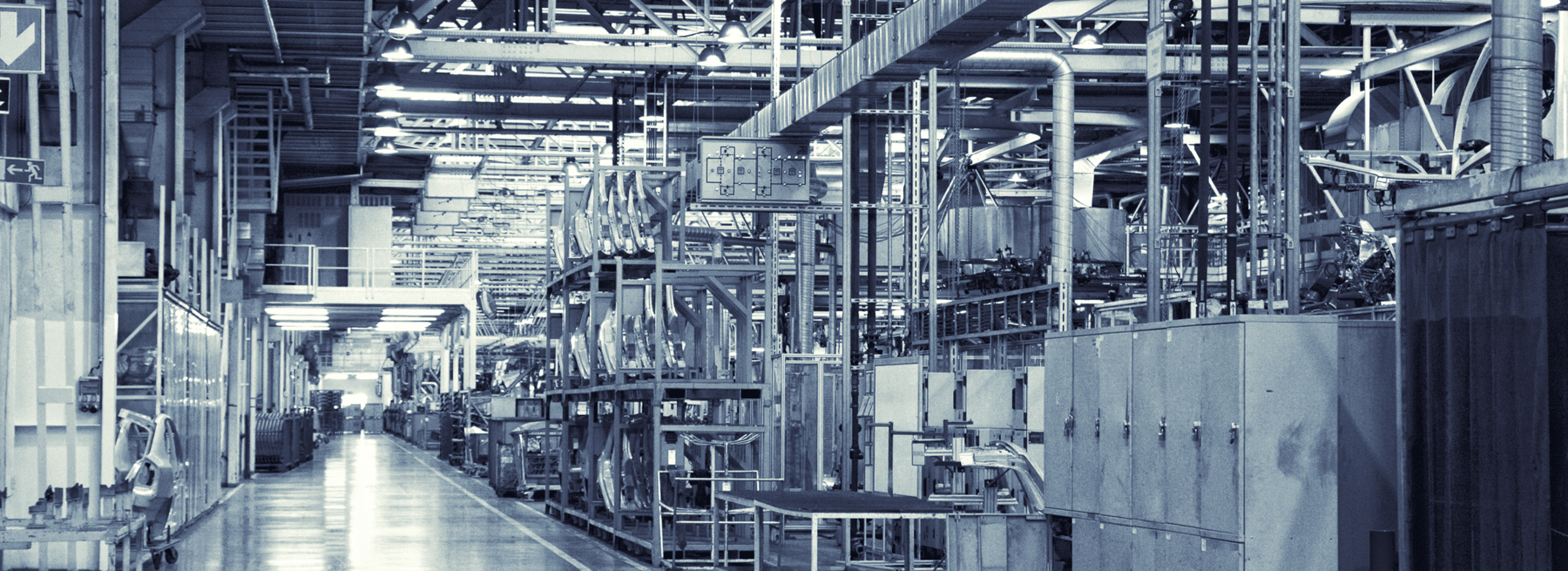In the past few years, manufacturing has shown great resiliency. The pandemic could have potentially forced many manufacturing facilities to shut their doors for good. After all, most manufacturing jobs cannot be done remotely. Many facilities could not operate until the government allowed them to reopen their doors.
Despite these seemingly insurmountable challenges, there is great news. The market size of the manufacturing industry was $7.1 trillion in 2022 with a growth rate of 4.6% according to an IBISWorld report on manufacturing in the U.S.
Moreover, TED: The Economics Daily says most manufacturing industries have returned to pre-pandemic rates. TED shows labor productivity has surpassed pre-pandemic rates. While these are all good signs and the future looks bright, manufacturers need to be intentional to make sure it happens.
Even after the stay-at-home orders disappeared to allow workers back into the facility, companies had to rethink their processes and create new protocols to ensure worker safety. Now that the pandemic dust has settled, it’s time for manufacturing to look ahead to ensure a successful future.
Top 5 Manufacturing Challenges
The way to prepare for the future is by understanding and addressing manufacturing’s key challenges. Most of these challenges are interwoven. This means one challenge caused another challenge. Here are the top five challenges to overcome to stay strong and competitive.
1. Supply chain breakdown
The supply chain disruptions caused a domino effect. The shortage of supplies and materials led to increased demand and decreased supply. As a result, the prices of supplies and materials soared. While there has been progress in stabilizing the supply chain, almost every industry still feels its side effects.
For one, the broken supply chain contributed to the worker shortage. This created another challenge for manufacturing. It also contributed to inflation as many raw materials, metals, and materials became expensive. This forced companies to trim their product lines. In short, the supply chain created more challenges for manufacturers, which follow.
2. Labor shortage
The shortage of skilled labor impacts many industries, but more so for manufacturing. All industries are experiencing a mass exodus of employees as the baby boomers retire. Many jobs require workers to have specialized knowledge, such as welding, engineering, and robotics. In a lot of cases, manufacturers have fewer employees trying to keep up with the same output as before when they had more employees.
Therefore, manufacturers need to be intentional about their talent recruitment and retention strategy. They also need to explore the digitization of their processes. (This is another key challenge.) The increased competition for skilled workers is driving the need to offer higher salaries. Of course, there’s more to recruitment and retention than the salary.
Employees need training and development opportunities to upskill. While it’s scary to think they might use the upskilling to find new jobs elsewhere, it’s worth the risk because they could move into more challenging roles within the company. Leaders must recognize and reward quality work. Even a simple acknowledgment for doing a good job can make a difference as long as it’s sincere.
The company’s culture matters. Creating a positive and inclusive work environment can mean the difference between staying or leaving. Another valuable retention tool is to welcome and value feedback from employees. A positive work culture that appreciates feedback encourages open communication.
Recruitment requires the company to consider revising its recruiting and hiring process. The traditional way of hiring doesn’t work anymore. It is not inclusive. If companies want to attract talent, then they need to go where they are, such as through social media.
3. Inflation
Unfortunately, inflation has been at an all-time high and reached double digits. Obviously, inflation drove up prices for many items. As a result, companies and customers have changed their buying habits. That’s why manufacturing must find creative solutions to ease the pressure of being shorthanded while dealing with high prices for the things it buys including raw materials.
Inflation is also partly responsible for an increase in crimes. With items becoming more expensive, criminals go after those higher-priced and higher-demand items knowing they’ll be able to make a pretty profit. One of the crimes that has grown in recent years is cargo theft.
The connection between inflation and cargo theft is evident as CargoNet reports that 2022 saw more than 1,700 supply chain risk events in the U.S. and Canada. This went up by 15% over the previous year. During this timeframe, the value of items associated with cargo theft was $223 million.
Shipping costs have also gone up. All these components have made conducting business more expensive for manufacturers. And it’s largely decreasing their profit margins. But if they raise the prices too much, they could alienate customers. As previously stated, these challenges are intertwined. Cutting costs will involve updating technology, which can take over some of the tedious tasks done by humans.
4. Rising theft and violence
When you mix supply chain woes with high inflation, it can lead to an increase in crime. Interest rates are also up. Data shows inflation, layoffs, and higher interest rates hint that a recession is coming. This has proven true since the 1950s as explained in a Reuters article.
This connection is also confirmed by Richard Rosenfeld and Matt Vogel in Homicide, Acquisitive Crime, and Inflation: A City-Level Longitudinal Analysis. Usually, inflation goes up about 2% per year. However, the U.S. has experienced the highest increase in the average price of goods per the U.S. Bureau of Labor Statistics Consumer Price Index.
Many state and local governments have changed laws relating to crime and policing. One of the most common changes is the reclassification of crimes from felonies to misdemeanors. Along with the lower classification comes less severe punishment.
On top of everything, there are more violent and brazen thieves than ever. The Council on Criminal Justice (CCJ) shows violent crime has gone up. This includes aggravated assault, robbery, motor vehicle theft, and gun assault as reported in a CCJ’s news release.
5. Outdated technologies
Updating technologies can help overcome problems associated with the labor shortage and higher operating costs. Digitizing repetitive tasks cuts human mistakes. Technologies like automated mobile robots (AMR) let workers spend more time on value-added work that technology cannot do.
Many manufacturing processes such as picking and scanning are still manual. There have been many manufacturing technology advancements in recent years. For example, picking can be done visually and audibly. Employees can wear a headset and give voice commands to use the business systems and work with the pick lists. This frees their hands, which reduces the risk of common hand and wrist injuries.
Visual picking, on the other hand, involves wearing an augmented reality headset. The worker will view the picking instructions inside the headset. It provides information such as quantities and where to place the picked items. Both processes are hands-free and speed up operations.
The Internet of Things (IoT) is skyrocketing. Many of these items are wearables. According to Grand View Research market analysis, the wearable market was valued at $61 billion in 2022. Virtual reality and augmented reality are also being incorporated into manufacturing. They can help with training and tasks like the visual picking example.
Boston Consulting Group (BCG) says manufacturing companies that close the automation gap will improve labor and quality while reducing conversion costs by up to 25%. This is significant for manufacturing.
Manufacturing companies that collect, analyze, and use data effectively will have the tools they need to make smarter business decisions faster. This is especially the case if they invest in total productive maintenance (TPM). This method can enhance performance and cut downtime.
Manufacturers cannot fix inflation, crime, or the supply chain. However, they can update their technologies. Investing in the right technologies will help ease the side effects of the worker shortage and higher costs. As for crime, manufacturers can help protect themselves from crime with a multipronged security program that consists of video surveillance with remote monitoring and an access control system.
What Manufacturing Can Do to Address Crime
A multi-layered security strategy that consists of remote video surveillance and an access control system can lower security risks in a manufacturing facility. Advancements in remote video surveillance and access control systems have turned them into cost-effective solutions that could yield a faster return on investment.
For a fraction of the cost of traditional security technologies and security guards, live video monitoring can watch over the entire perimeter of the facility. The perimeter must include parking and loading zones as these are popular criminal targets. As a proactive security technology, video surveillance can monitor unsafe places such as high-voltage areas and around machines and equipment.
The reason video surveillance with monitoring is a proactive manufacturing security technology is because it can help deter crime. Traditional alarm systems and basic security cameras don’t do anything until after something happens. The key differentiators of video surveillance monitoring are video analytics and trained monitoring operators.
If no one is monitoring the cameras, then the technology is passive and may not deter crimes. This could create a liability problem. Security cameras with remote monitoring can help reduce liability. This is because it relies on trained monitoring operators and video analytics to help identify, analyze, and act on suspicious activity in real time.
Integrating an access control system with video surveillance can do more than provide a way to deter crime. For one thing, security cameras can help spot potential hazards and problems before anyone gets hurt.
Manufacturers who add the right technologies could see their productivity rate rise while shaving risks for crimes and safety hazards. When you work with a security company like Stealth Monitoring, your manufacturing facility can get the support it needs for a customized security solution.
To learn what proactive security can do, view the manufacturing security videos. For more information about integrated security solutions with remote video surveillance and an access control system, contact us.
Texas Private Security License Number: B14187
California Alarm Operator License Number: ACO7876
Florida Alarm System Contractor I License Number: EF20001598
Tennessee Alarm Contracting Company License Number: 2294
Virginia Private Security Services Business License Number: 11-19499
Alabama Electronic Security License # 002116
Canada TSBC License: LEL0200704

